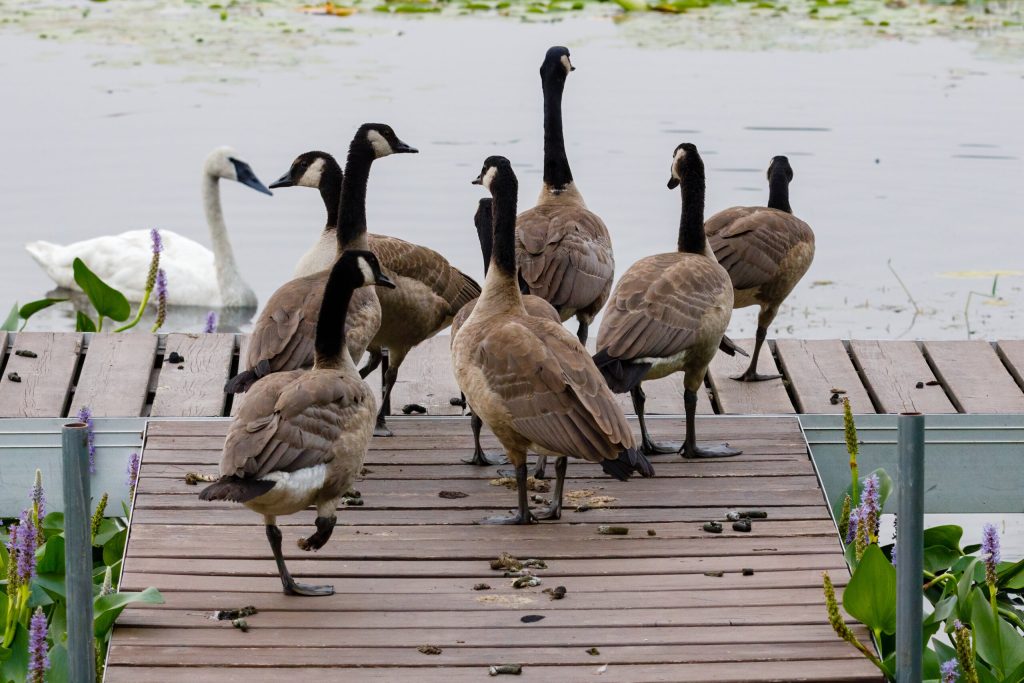

(© Aaron J. Hill – stock.adobe.com)
CHICAGO — When most middle school students go on field trips, they might bring back photos or souvenirs. But at Chicago’s Garfield Park Lagoon, one student brought back something far more significant: bacteria from goose droppings that would lead scientists to discover a potential new cancer-fighting compound.
The discovery emerged through an innovative program called the Chicago Antibiotic Discovery Lab, where students from underserved communities work alongside university scientists to explore their neighborhoods for beneficial bacteria. Led by Brian Murphy at the University of Illinois Chicago, the 14-week program, in concert with the Boys and Girls Club of Chicago, aims to address significant disparities in science education while producing meaningful research.
These young participants became genuine biomedical scientists before entering high school. Rather than observing from the sidelines, they actively participate in sophisticated laboratory work. Students learn to program and operate a specialized robot that scoops up bacterial colonies from growth plates and tests them for antibiotic activity. This hands-on approach transforms students into scientific investigators, giving them real-world experience while contributing to potential medical breakthroughs.
From 14 samples of goose dropping collected by the students, one particular sample collected in 2022 by 11-year-old Camarria Williams yielded exciting results. The bacteria discovered in the sample, called Pseudomonas idahonensis, produces a previously unknown natural compound named orfamide N. Williams interpreted the initial bioassay data, determining that the bacterium showed promising antibiotic activity.
“It was Camarria’s intellectual input that chose the goose poop,” Murphy told the Chicago Tribune. “None of us would have thought to do that, and she did it.”


In an interesting twist, it turned out that orfamide N wasn’t responsible for the antibiotic effects first observed. Incredibly, subsequent laboratory testing revealed it had a different and equally valuable (and exciting) property.
When testing the compound’s effects on cancer cells, researchers found that relatively small amounts of orfamide N could slow down the growth of both melanoma and ovarian cancer cells. Specifically, they measured how much of the compound was needed to reduce cancer cell growth by half. The results showed that orfamide N was effective at concentrations comparable to another similar compound they used for comparison.
This unexpected turn demonstrates a common occurrence in scientific research: sometimes you find something valuable while looking for something else entirely.
For Williams, the finding meant she was listed as a co-author on the paper documenting the discovery, which was published this past October in the peer-reviewed journal ACS Omega.
While the long-term impact of orfamide N remains to be seen, the impact of this discovery on the students involved is already clear. They’ve learned that science isn’t just something that happens in distant laboratories. It’s happening in their own neighborhoods, and they can be part of it. That realization might prove just as valuable as any compound they’ve discovered.
Paper Summary
Methodology
The research process combined student participation with rigorous scientific analysis. After initial sample collection, the team used various analytical methods to determine the compound’s structure and properties. Laboratory tests then revealed its potential biological activities, particularly against certain cancer cell lines.
Results
Initial testing showed orfamide N can affect cancer cells at relatively low concentrations. While these results are preliminary, they suggest potential therapeutic applications that warrant further investigation.
Limitations
This represents early-stage research, and many compounds that show initial promise don’t become medicines. Years of additional study would be needed to understand if this discovery could lead to practical medical applications.
Discussion and Takeaways
Beyond the scientific discovery, this program demonstrates how community engagement can enhance both education and research. It provides a model for other institutions seeking to combine meaningful scientific work with educational outreach.
Funding and Support
The authors acknowledge funding from the University of Illinois at Chicago Graduate College, Illinois-Indiana Sea Grant, an Illinois-Indiana Sea Grant Faculty Scholar Award, the Illinois-Indiana Sea Grant Graduate Student Scholar Award, and the National Institute of Diabetes and Digestive and Kidney Diseases of the National Institutes of Health. They extend special thanks to the volunteer outreach mentors at the Boys and Girls Clubs of Chicago.
Publication Details
The study, “Discovery of New Cyclic Lipodepsipeptide Orfamide N via Partnership with Middle School Students from the Boys and Girls Club,” appears in ACS Omega (2024), documenting both the scientific discovery and the innovative educational approach that made it possible.








